Reason to Believe 4
Chris Knepp
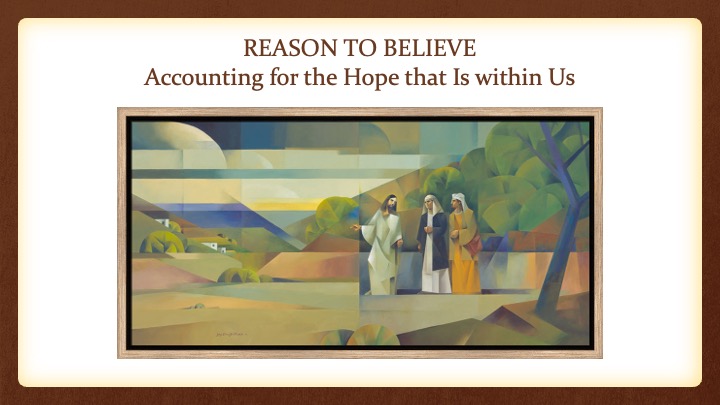
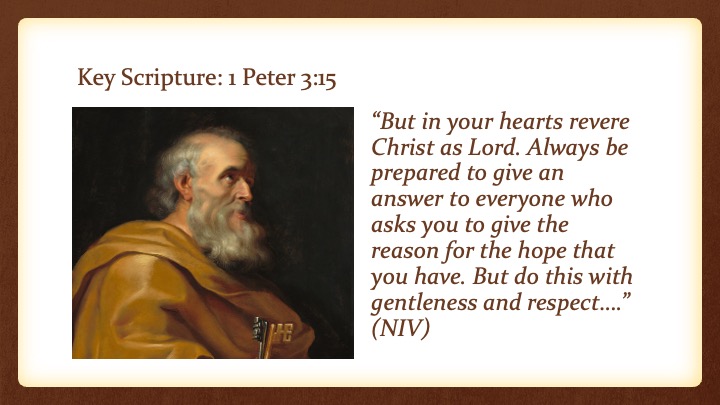
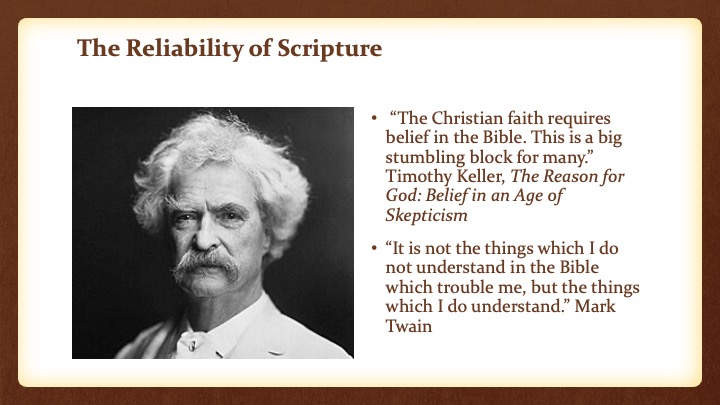
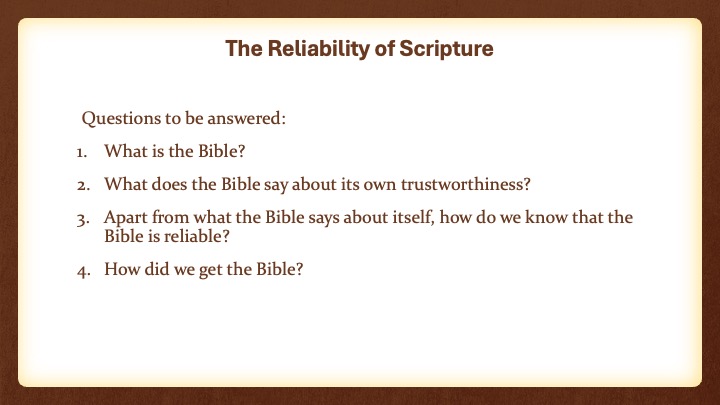
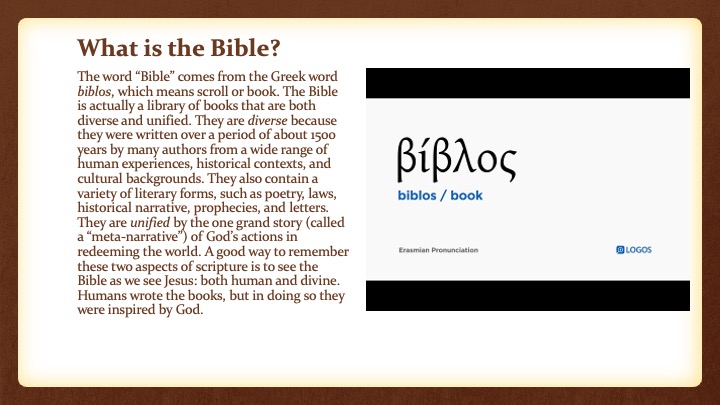
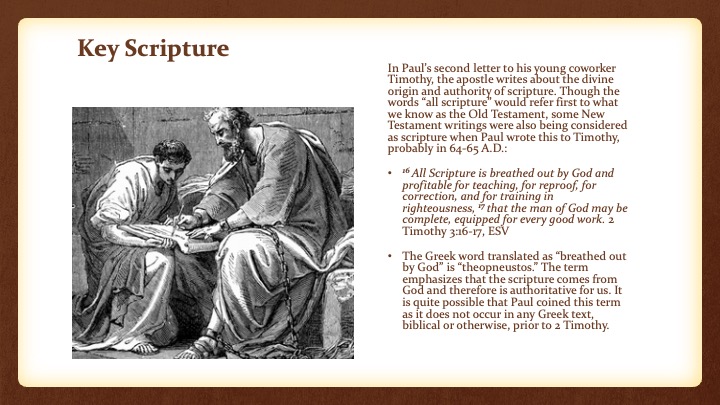

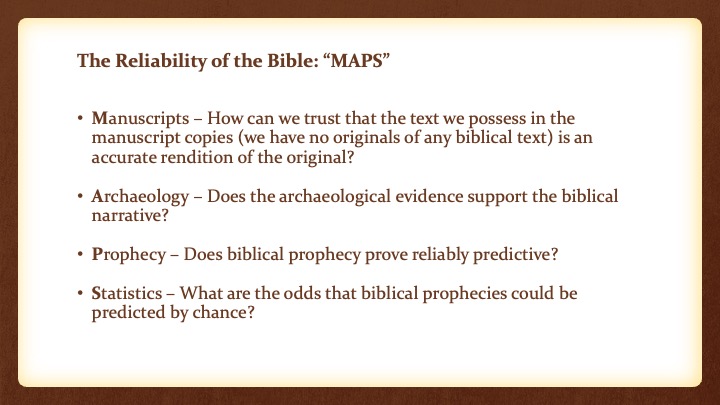

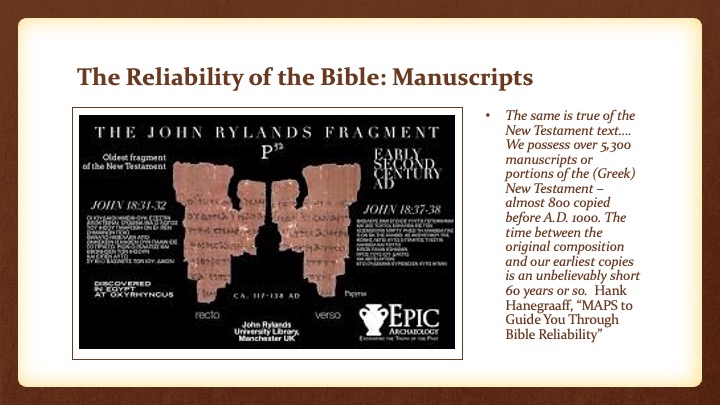
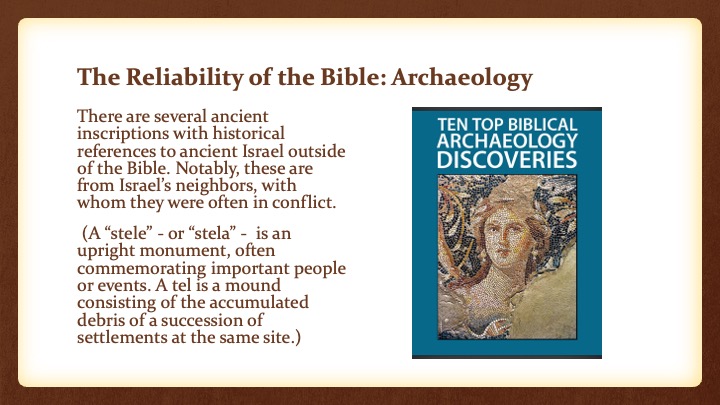
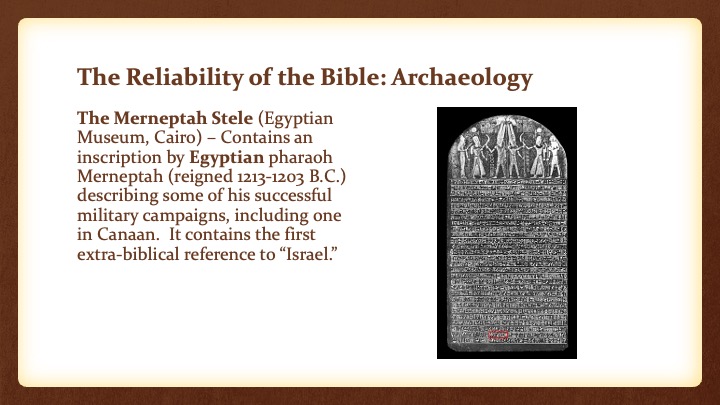
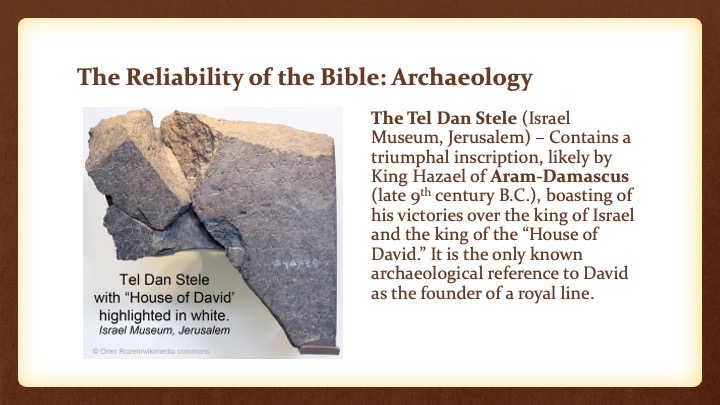
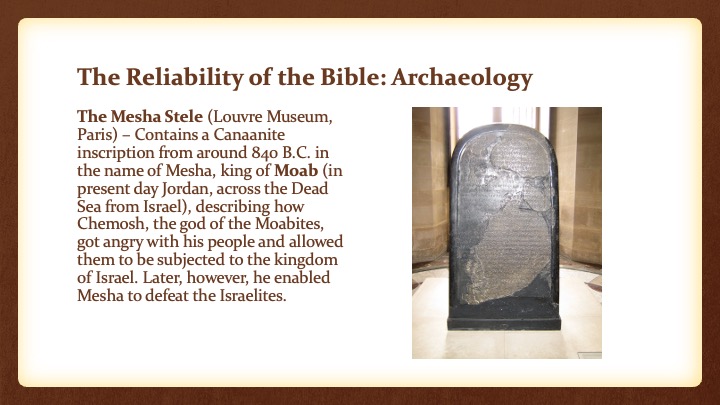
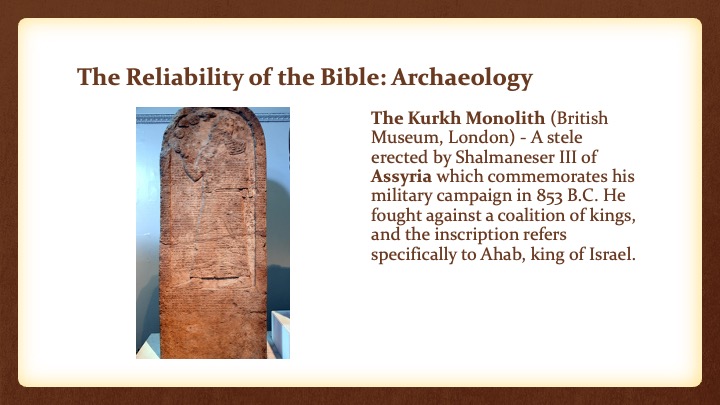
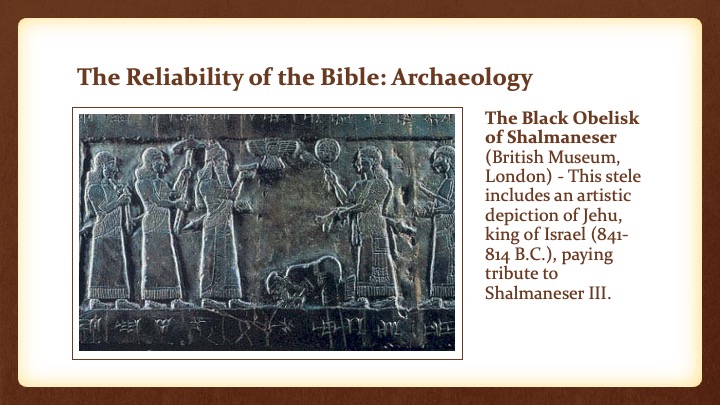
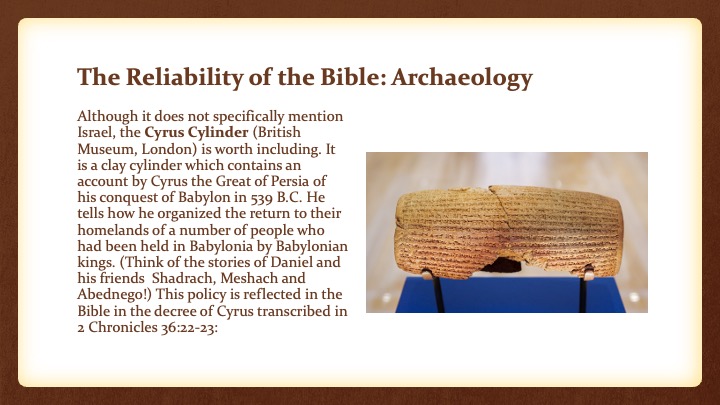
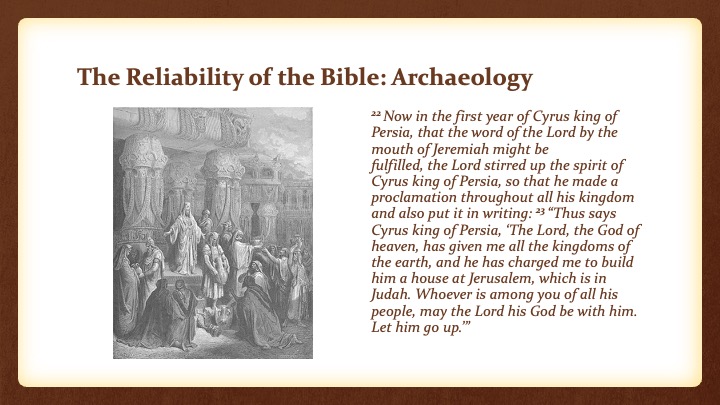
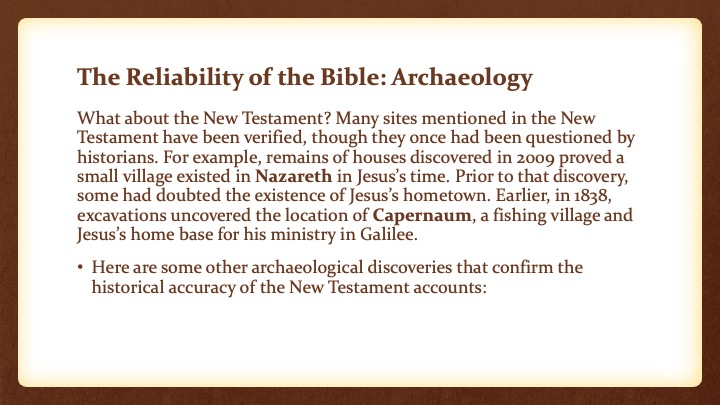
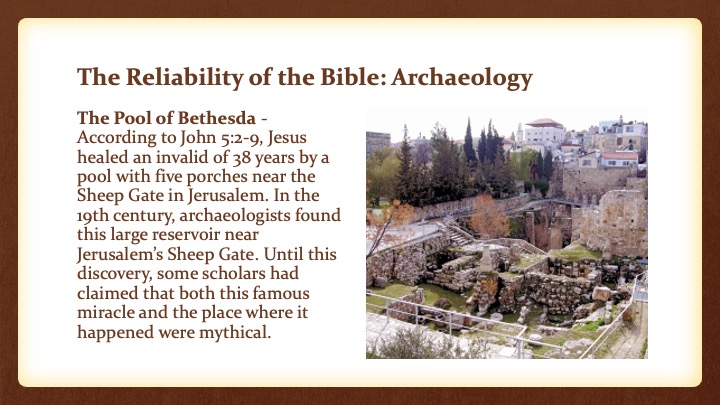
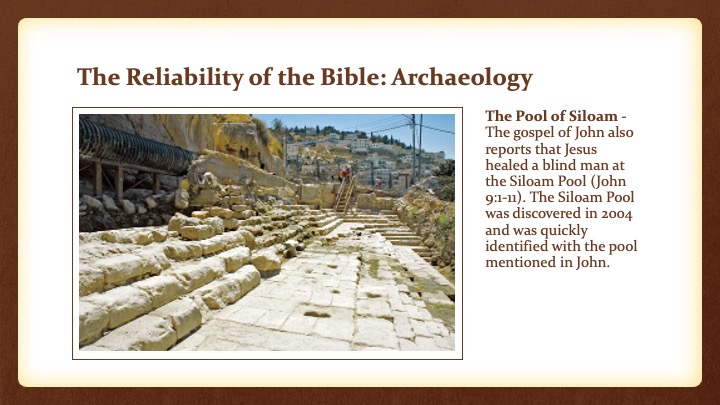
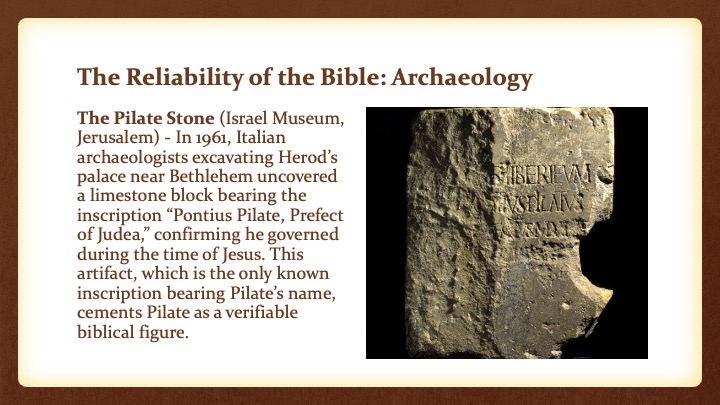
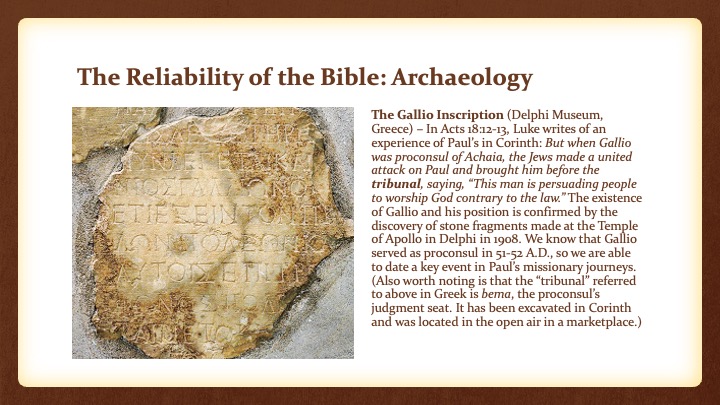
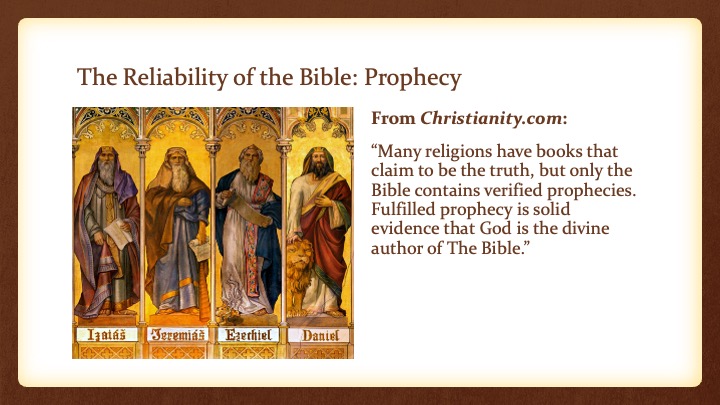
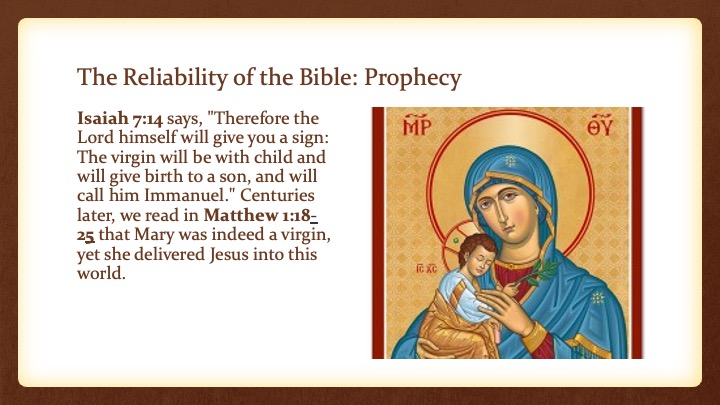
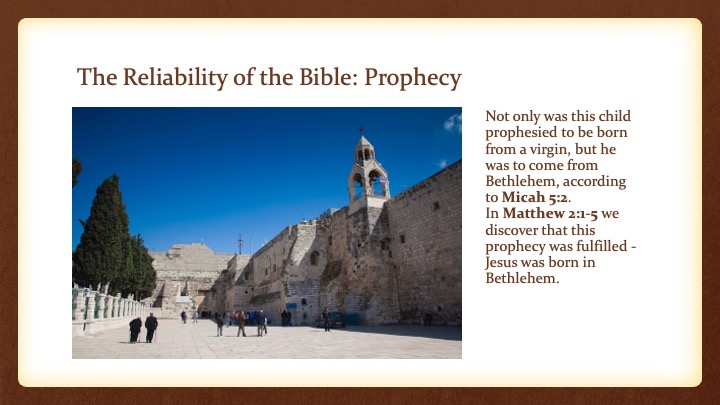
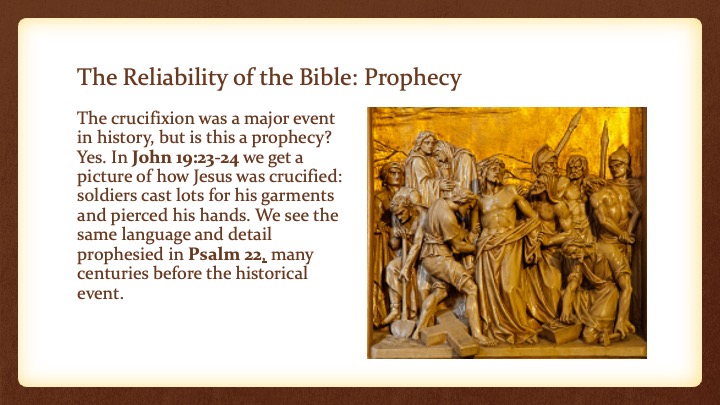
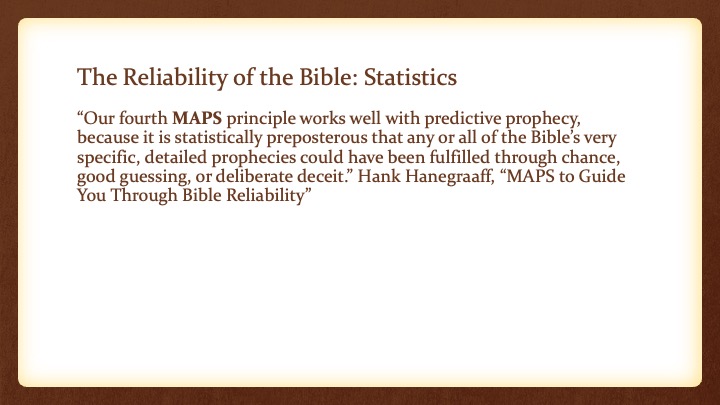
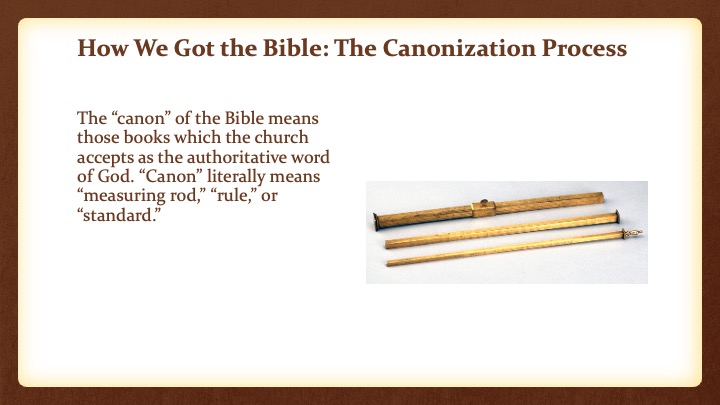
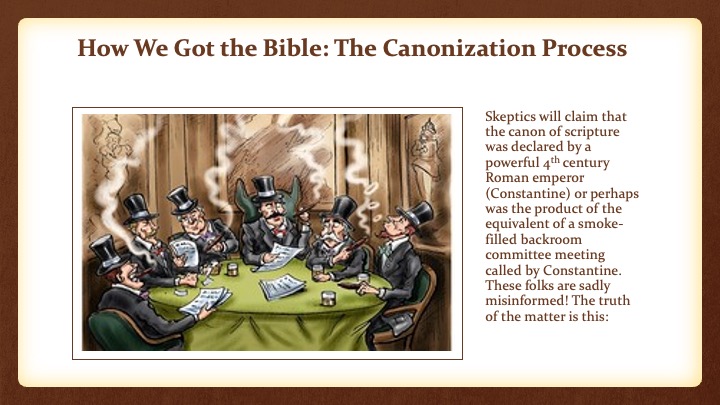
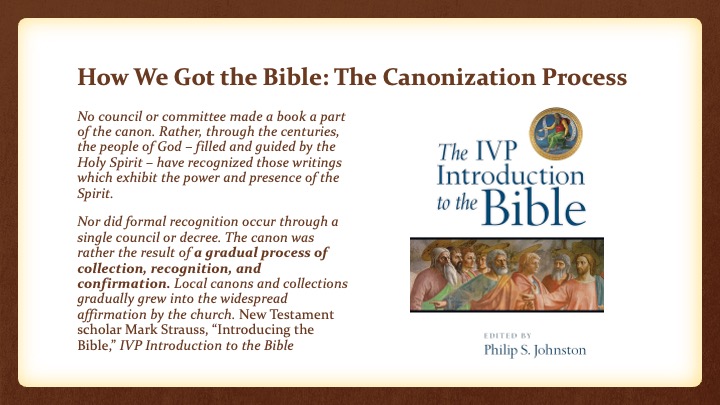
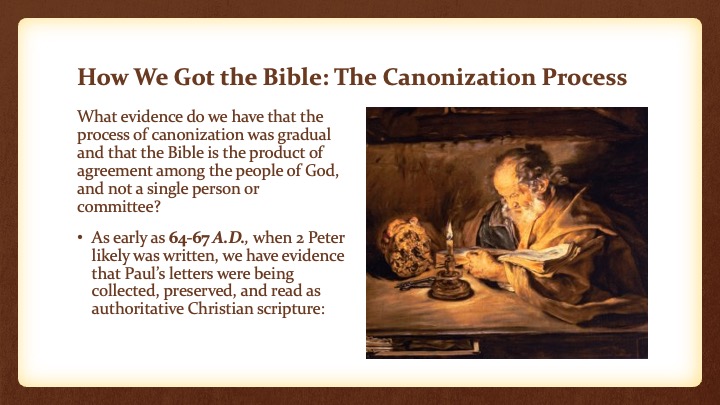
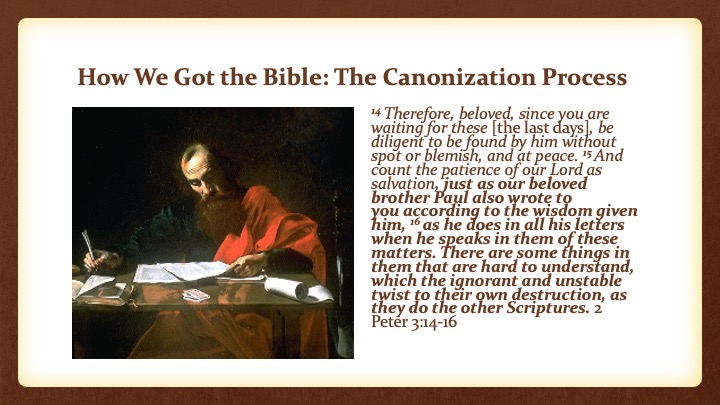
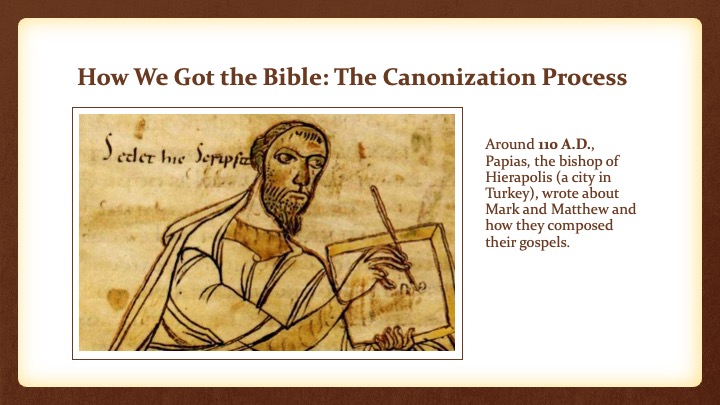
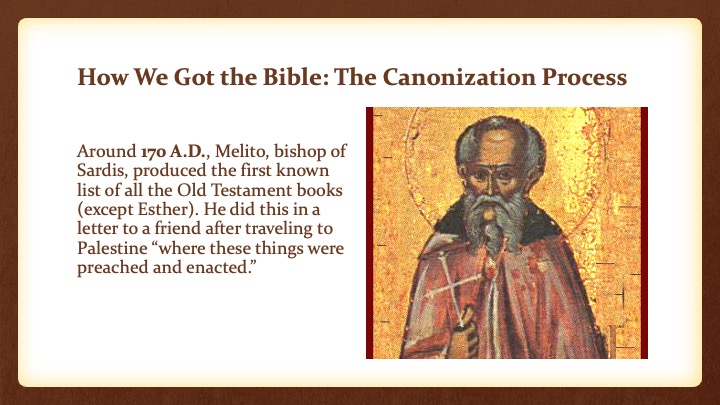
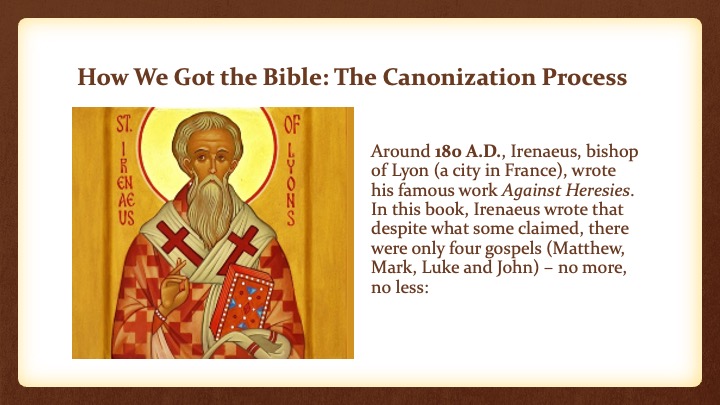
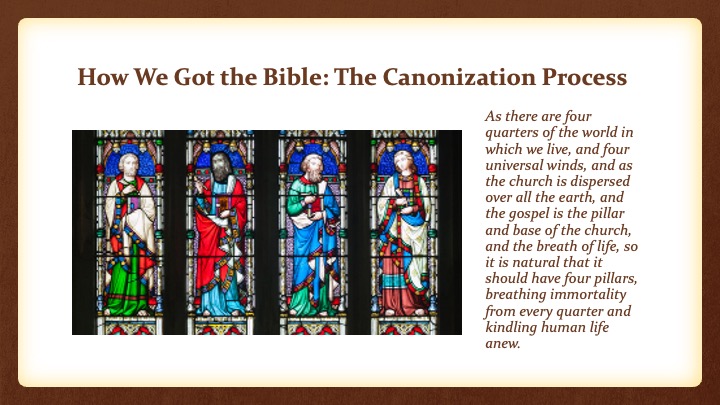
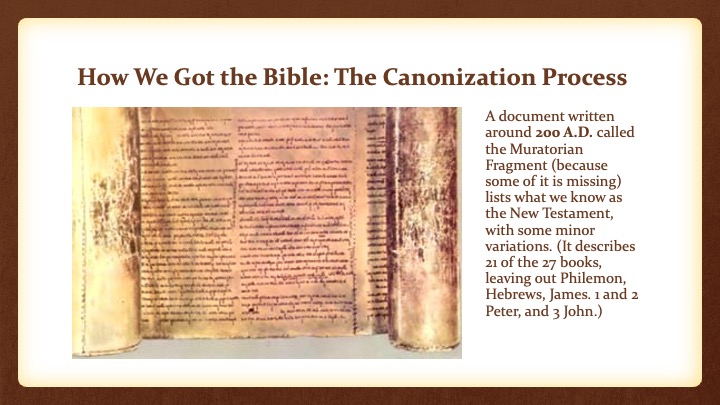
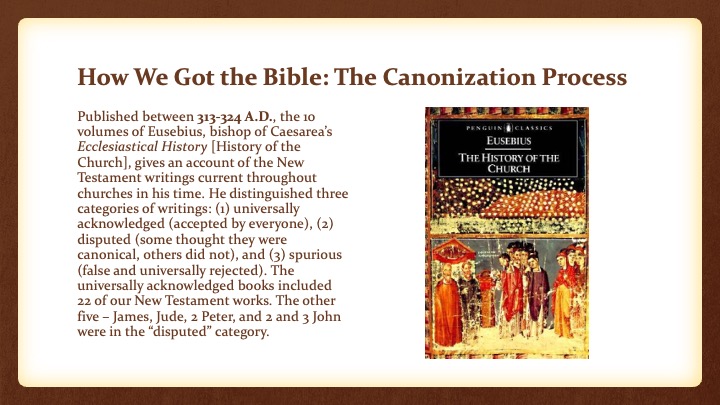
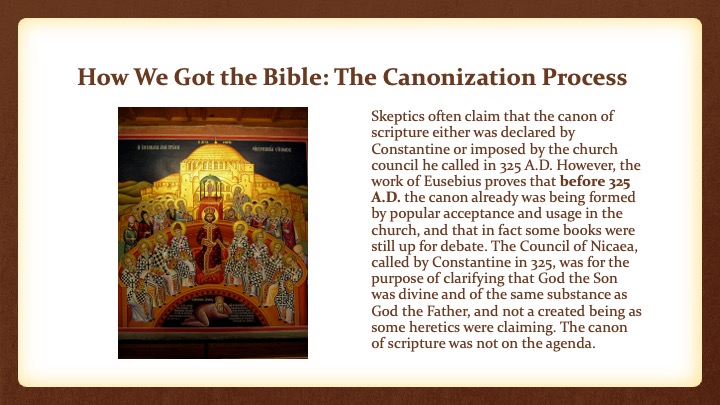

Reason to Believe
Links
< Home Page > < Reason to Believe Menu >
Reason to Believe Week 4 – The Text
REASON TO BELIEVE
Accounting for the Hope that Is within Us
Key Scripture: 1 Peter 3:15
“But in your hearts revere Christ as Lord. Always be prepared to give an answer to everyone who asks you to give the reason for the hope that you have. But do this with gentleness and respect….” (NIV)
The Reliability of Scripture
• “The Christian faith requires belief in the Bible. This is a big stumbling block for many.” Timothy Keller, The Reason for God: Belief in an Age of Skepticism
• “It is not the things which I do not understand in the Bible which trouble me, but the things which I do understand.” Mark Twain
The Reliability of Scripture
Questions to be answered:
- What is the Bible?
- What does the Bible say about its own trustworthiness?
- Apart from what the Bible says about itself, how do we know that the Bible is reliable?
- How did we get the Bible?
What is the Bible?
The word “Bible” comes from the Greek word biblos, which means scroll or book. The Bible is actually a library of books that are both diverse and unified. They are diverse because they were written over a period of about 1500 years by many authors from a wide range of human experiences, historical contexts, and cultural backgrounds. They also contain a variety of literary forms, such as poetry, laws, historical narrative, prophecies, and letters. They are unified by the one grand story (called a “meta-narrative”) of God’s actions in redeeming the world. A good way to remember these two aspects of scripture is to see the Bible as we see Jesus: both human and divine. Humans wrote the books, but in doing so they were inspired by God.
Reason to Believe - Key Scripture
In Paul’s second letter to his young coworker Timothy, the apostle writes about the divine origin and authority of scripture. Though the words “all scripture” would refer first to what we know as the Old Testament, some New Testament writings were also being considered as scripture when Paul wrote this to Timothy, probably in 64-65 A.D.:
• 16 All Scripture is breathed out by God and profitable for teaching, for reproof, for correction, and for training in righteousness, 17 that the man of God may be complete, equipped for every good work. 2 Timothy 3:16-17, ESV
• The Greek word translated as “breathed out by God” is “theopneustos.” The term emphasizes that the scripture comes from God and therefore is authoritative for us. It is quite possible that Paul coined this term as it does not occur in any Greek text, biblical or otherwise, prior to 2 Timothy.
The Reliability of the Bible: “MAPS”
Hank Hanegraaff is one of the world’s leading Christian apologists. He is president of the Christian Research Institute and host of the Bible Answer Man radio show and the Hank Unplugged podcast. He has developed the acronym MAPS to support the historical reliability of scripture.
• Manuscripts – How can we trust that the text we possess in the manuscript copies (we have no originals of any biblical text) is an accurate rendition of the original?
• Archaeology – Does the archaeological evidence support the biblical narrative?
• Prophecy – Does biblical prophecy prove reliably predictive?
• Statistics – What are the odds that biblical prophecies could be predicted by chance?
Reason to Believe
The Reliability of the Bible: Manuscripts
• The more copies, the better able we are to work back to the original. The closer the time span between the copies and the original, the less likely it is that serious textual error would creep in.
• We have more than 14,000 manuscripts and fragments of the Old Testament…. The short time between the original Old Testament manuscripts (completed around 400 B.C.) and the first extensive copies (about 250 B.C.) – coupled with the more than 14,000 copies that have been discovered – ensures the trustworthiness of the Old Testament text.
• The same is true of the New Testament text…. We possess over 5,300 manuscripts or portions of the (Greek) New Testament – almost 800 copied before A.D. 1000. The time between the original composition and our earliest copies is an unbelievably short 60 years or so. Hank Hanegraaff, “MAPS to Guide You Through Bible Reliability”
Reason to Believe
The Reliability of the Bible: Archaeology
There are several ancient inscriptions with historical references to ancient Israel outside of the Bible. Notably, these are from Israel’s neighbors, with whom they were often in conflict.
(A “stele” - or “stela” - is an upright monument, often commemorating important people or events. A tel is a mound consisting of the accumulated debris of a succession of settlements at the same site.)
The Merneptah Stele (Egyptian Museum, Cairo) – Contains an inscription by Egyptian pharaoh Merneptah (reigned 1213-1203 B.C.) describing some of his successful military campaigns, including one in Canaan. It contains the first extra-biblical reference to “Israel.”
The Tel Dan Stele (Israel Museum, Jerusalem) – Contains a triumphal inscription, likely by King Hazael of Aram-Damascus (late 9th century B.C.), boasting of his victories over the king of Israel and the king of the “House of David.” It is the only known archaeological reference to David as the founder of a royal line.
The Mesha Stele (Louvre Museum, Paris) – Contains a Canaanite inscription from around 840 B.C. in the name of Mesha, king of Moab (in present day Jordan, across the Dead Sea from Israel), describing how Chemosh, the god of the Moabites, got angry with his people and allowed them to be subjected to the kingdom of Israel. Later, however, he enabled Mesha to defeat the Israelites.
The Kurkh Monolith (British Museum, London) - A stele erected by Shalmaneser III of Assyria which commemorates his military campaign in 853 B.C. He fought against a coalition of kings, and the inscription refers specifically to Ahab, king of Israel.
The Black Obelisk of Shalmaneser (British Museum, London) - This stele includes an artistic depiction of Jehu, king of Israel (841-814 B.C.), paying tribute to Shalmaneser III.
Although it does not specifically mention Israel, the Cyrus Cylinder (British Museum, London) is worth including. It is a clay cylinder which contains an account by Cyrus the Great of Persia of his conquest of Babylon in 539 B.C. He tells how he organized the return to their homelands of a number of people who had been held in Babylonia by Babylonian kings. (Think of the stories of Daniel and his friends Shadrach, Meshach and Abednego!) This policy is reflected in the Bible in the decree of Cyrus transcribed in 2 Chronicles 36:22-23:
22 Now in the first year of Cyrus king of Persia, that the word of the Lord by the mouth of Jeremiah might be fulfilled, the Lord stirred up the spirit of Cyrus king of Persia, so that he made a proclamation throughout all his kingdom and also put it in writing: 23 “Thus says Cyrus king of Persia, ‘The Lord, the God of heaven, has given me all the kingdoms of the earth, and he has charged me to build him a house at Jerusalem, which is in Judah. Whoever is among you of all his people, may the Lord his God be with him. Let him go up.’”
Reason to Believe
What about the New Testament? Many sites mentioned in the New Testament have been verified, though they once had been questioned by historians. For example, remains of houses discovered in 2009 proved a small village existed in Nazareth in Jesus’s time. Prior to that discovery, some had doubted the existence of Jesus’s hometown. Earlier, in 1838, excavations uncovered the location of Capernaum, a fishing village and Jesus’s home base for his ministry in Galilee.
• Here are some other archaeological discoveries that confirm the historical accuracy of the New Testament accounts:
• The Pool of Bethesda - According to John 5:2-9, Jesus healed an invalid of 38 years by a pool with five porches near the Sheep Gate in Jerusalem. In the 19th century, archaeologists found this large reservoir near Jerusalem’s Sheep Gate. Until this discovery, some scholars had claimed that both this famous miracle and the place where it happened were mythical.
• The Pilate Stone (Israel Museum, Jerusalem) - In 1961, Italian archaeologists excavating Herod’s palace near Bethlehem uncovered a limestone block bearing the inscription “Pontius Pilate, Prefect of Judea,” confirming he governed during the time of Jesus. This artifact, which is the only known inscription bearing Pilate’s name, cements Pilate as a verifiable biblical figure.
Reason to Believe
The Reliability of the Bible: Prophecy
From Christianity.com:
“Many religions have books that claim to be the truth, but only the Bible contains verified prophecies. Fulfilled prophecy is solid evidence that God is the divine author of The Bible.”
Isaiah 7:14 says, "Therefore the Lord himself will give you a sign: The virgin will be with child and will give birth to a son, and will call him Immanuel." Centuries later, we read in Matthew 1:18-25 that Mary was indeed a virgin, yet she delivered Jesus into this world.
Not only was this child prophesied to be born from a virgin, but he was to come from Bethlehem, according to Micah 5:2. In Matthew 2:1-5 we discover that this prophecy was fulfilled - Jesus was born in Bethlehem.
The crucifixion was a major event in history, but is this a prophecy? Yes. In John 19:23-24 we get a picture of how Jesus was crucified: soldiers cast lots for his garments and pierced his hands. We see the same language and detail prophesied in Psalm 22, many centuries before the historical event.
Reason to Believe The Reliability of the Bible: Statistics
“Our fourth MAPS principle works well with predictive prophecy, because it is statistically preposterous that any or all of the Bible’s very specific, detailed prophecies could have been fulfilled through chance, good guessing, or deliberate deceit.” Hank Hanegraaff, “MAPS to Guide You Through Bible Reliability”
Reason to Believe
How We Got the Bible: The Canonization Process
The “canon” of the Bible means those books which the church accepts as the authoritative word of God. “Canon” literally means “measuring rod,” “rule,” or “standard.”
Skeptics will claim that the canon of scripture was declared by a powerful 4th century Roman emperor (Constantine) or perhaps was the product of the equivalent of a smoke-filled backroom committee meeting called by Constantine. These folks are sadly misinformed! The truth of the matter is this:
No council or committee made a book a part of the canon. Rather, through the centuries, the people of God – filled and guided by the Holy Spirit – have recognized those writings which exhibit the power and presence of the Spirit.
Nor did formal recognition occur through a single council or decree. The canon was rather the result of a gradual process of collection, recognition, and confirmation. Local canons and collections gradually grew into the widespread affirmation by the church. New Testament scholar Mark Strauss, “Introducing the Bible,” IVP Introduction to the Bible
What evidence do we have that the process of canonization was gradual and that the Bible is the product of agreement among the people of God, and not a single person or committee?
• As early as 64-67 A.D., when 2 Peter likely was written, we have evidence that Paul’s letters were being collected, preserved, and read as authoritative Christian scripture:
• 14 Therefore, beloved, since you are waiting for these [the last days], be diligent to be found by him without spot or blemish, and at peace. 15 And count the patience of our Lord as salvation, just as our beloved brother Paul also wrote to you according to the wisdom given him, 16 as he does in all his letters when he speaks in them of these matters. There are some things in them that are hard to understand, which the ignorant and unstable twist to their own destruction, as they do the other Scriptures. 2 Peter 3:14-16
• Around 110 A.D., Papias, the bishop of Hierapolis (a city in Turkey), wrote about Mark and Matthew and how they composed their gospels.
• Around 170 A.D., Melito, bishop of Sardis, produced the first known list of all the Old Testament books (except Esther). He did this in a letter to a friend after traveling to Palestine “where these things were preached and enacted.”
• Around 180 A.D., Irenaeus, bishop of Lyon (a city in France), wrote his famous work Against Heresies. In this book, Irenaeus wrote that despite what some claimed, there were only four gospels (Matthew, Mark, Luke and John) – no more, no less:
• As there are four quarters of the world in which we live, and four universal winds, and as the church is dispersed over all the earth, and the gospel is the pillar and base of the church, and the breath of life, so it is natural that it should have four pillars, breathing immortality from every quarter and kindling human life anew.
• A document written around 200 A.D. called the Muratorian Fragment (because some of it is missing) lists what we know as the New Testament, with some minor variations. (It describes 21 of the 27 books, leaving out Philemon, Hebrews, James. 1 and 2 Peter, and 3 John.)
• Published between 313-324 A.D., the 10 volumes of Eusebius, bishop of Caesarea’s Ecclesiastical History [History of the Church], gives an account of the New Testament writings current throughout churches in his time. He distinguished three categories of writings: (1) universally acknowledged (accepted by everyone), (2) disputed (some thought they were canonical, others did not), and (3) spurious (false and universally rejected). The universally acknowledged books included 22 of our New Testament works. The other five – James, Jude, 2 Peter, and 2 and 3 John were in the “disputed” category.
• Skeptics often claim that the canon of scripture either was declared by Constantine or imposed by the church council he called in 325 A.D. However, the work of Eusebius proves that before 325 A.D. the canon already was being formed by popular acceptance and usage in the church, and that in fact some books were still up for debate. The Council of Nicaea, called by Constantine in 325, was for the purpose of clarifying that God the Son was divine and of the same substance as God the Father, and not a created being as some heretics were claiming. The canon of scripture was not on the agenda.
• By 367 A.D. it became clear that a consensus had been reached regarding the canon of scripture. In his famous “Easter letter,” Athanasius, bishop of Alexandria, included a list of 27 New Testament books identical to what we use today. (He also listed all the books of our Old Testament, omitting only Esther.) Even then, the canon was not confirmed (“made official”) until church councils met in the North African cities of Hippo in 393 and Carthage in 397.